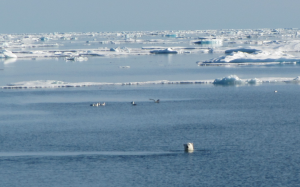
Polar bears – or reason #7691 for why it is great to be an oceanographer
Polar bear photos from a cruise last year. Just because. Imagine you are on a research ship somewhere in the Greenland Sea. You are, as you have been for the…
